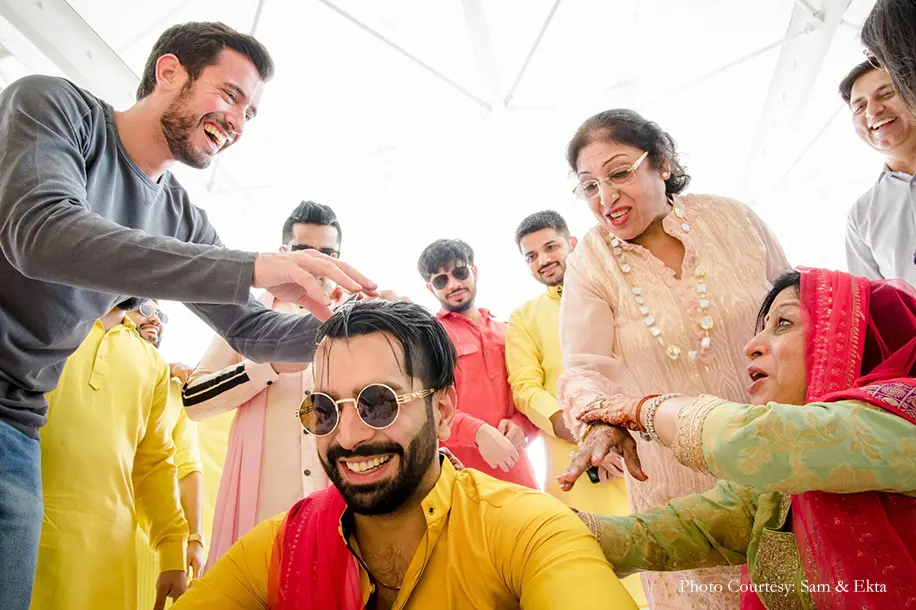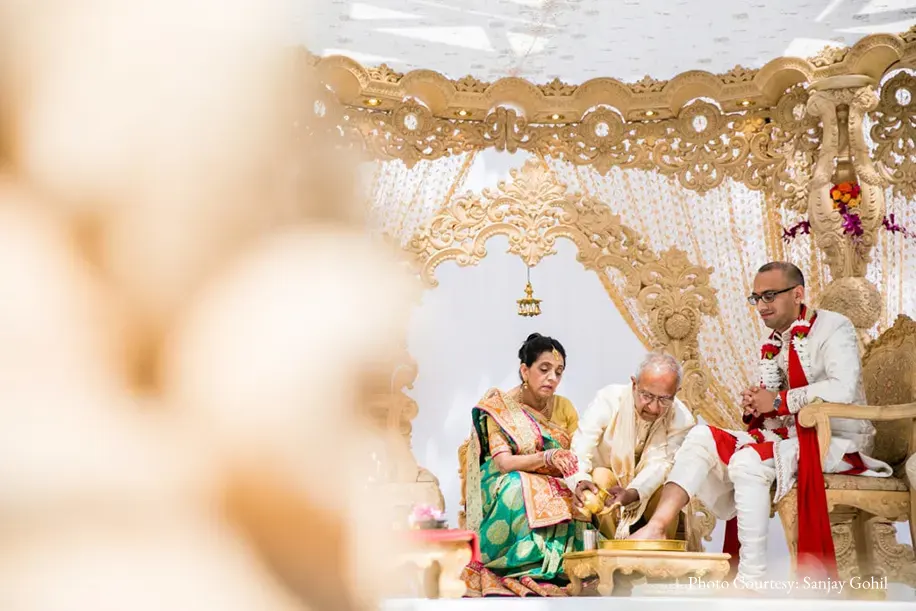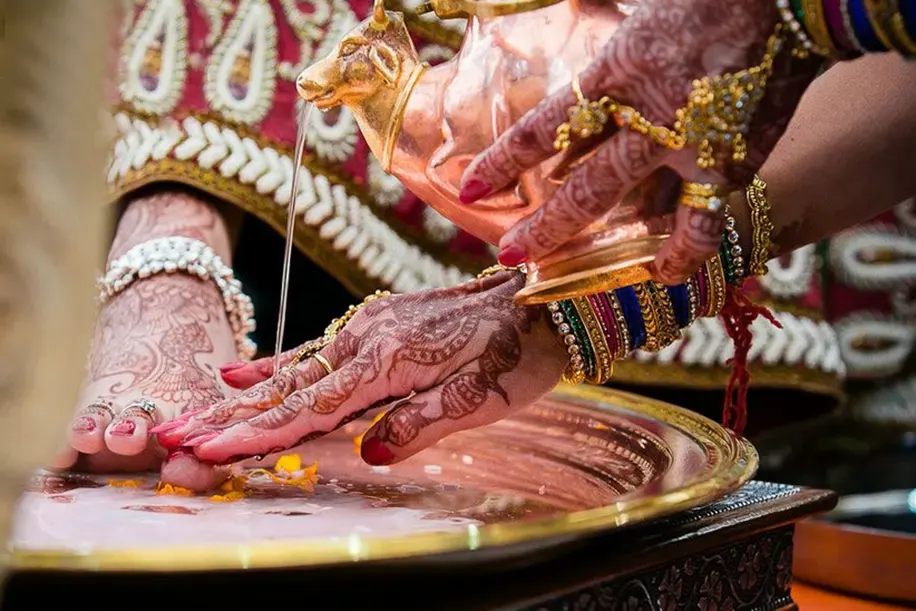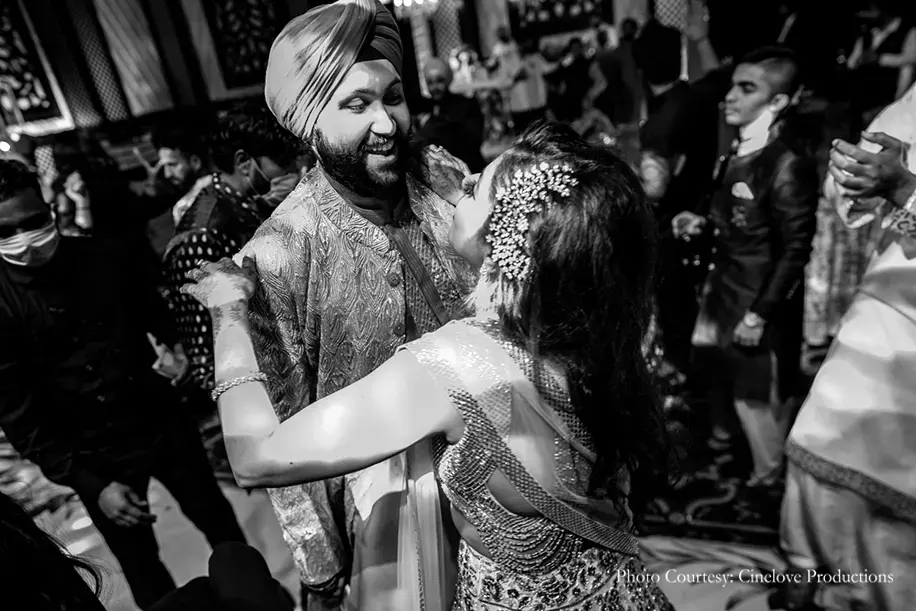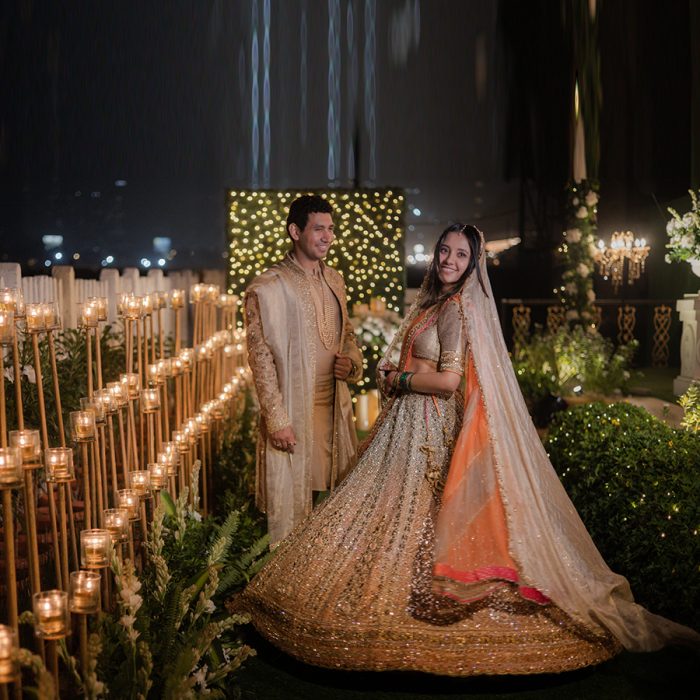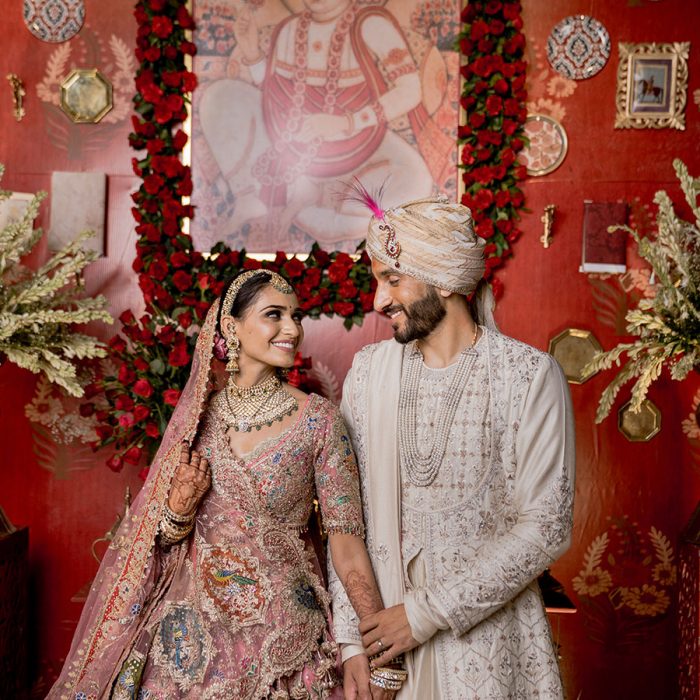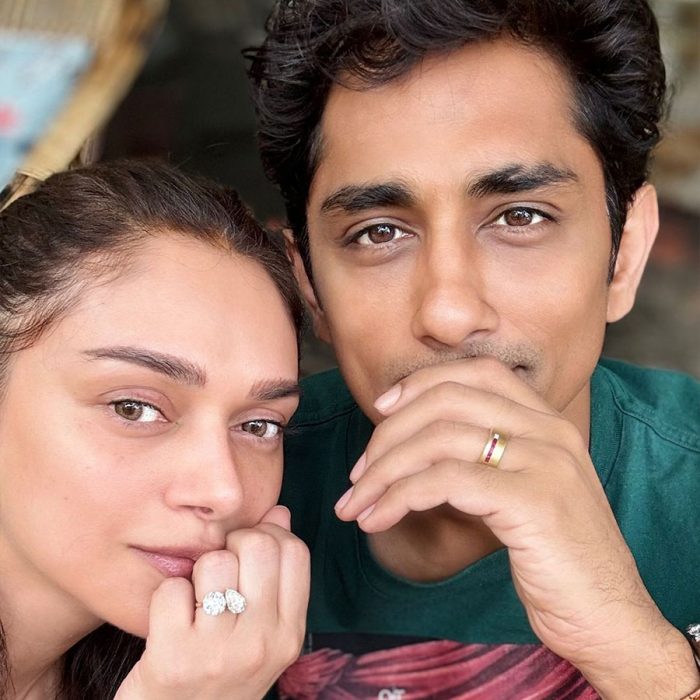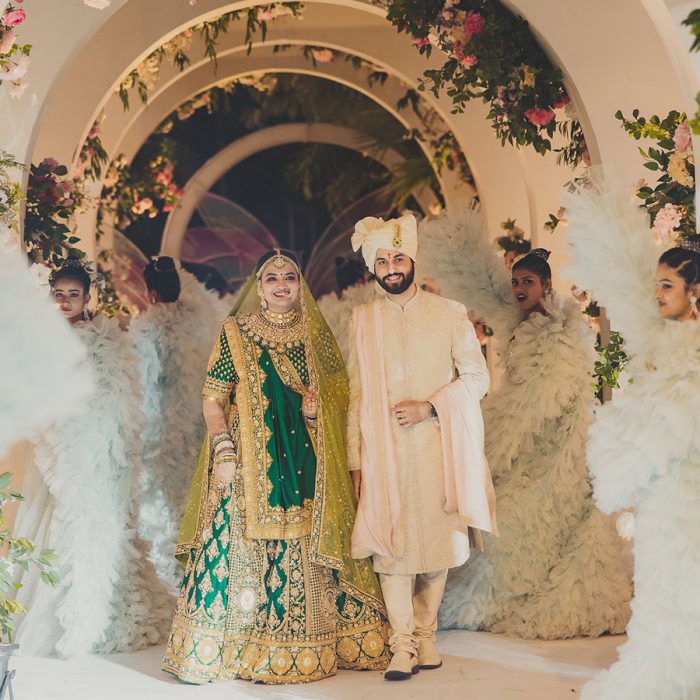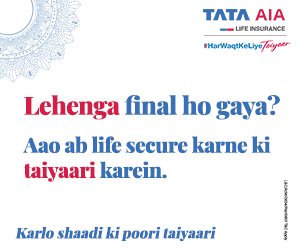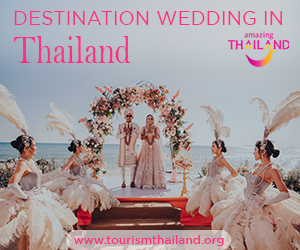Sindhi Weddings: Customs and Traditions
Rituals, customs, style and more! Here's everything you need to know about Sindhi weddings.
A lavish affair with a memorable blend of extravagance, fun and traditions, Sindhi weddings reflect the ‘Live life King Size’ mindset that Sindhis are affectionately known for! While culturally and visually their celebrations seem quite similar to other North Indian weddings such as Punjabi, Marwari and others, their festivities include a plethora of small and big customs, each with a deep meaning that sets them apart. Exploring the depth and intricacies of Sindhi wedding traditions, we bring to you the next installment of the Wedding Tradition Series: a kaleidoscopic guide to different regional cultures, spanning rituals, customs, fashion and more.
As more couples from different cultures and even countries tie the knot, they desire a beautiful blend of celebrations that will stay with them and their guests forever. Whether you are a bride or groom-to-be planning your wedding, or a guest invited to a friend’s big day, planning for a celebration that is new to you can often get stressful.
This wedding tradition series is aimed at answering all your questions about important ceremonies and the meaning behind them, how to dress for different functions and also, unique aspects of the experience to embrace, traversing through one culture at a time.
Welcome to the colorful traditions and grandeur of Sindhi weddings!
Wedding Functions
Kacchi Misri
Marking the first meeting between the bride and groom’s families after their match is fixed, Kachhi Misri ceremony is the informal engagement akin to a Roka where the bride’s family gifts clothes, sweets, fruits, coconut and lumps of misri (sugar crystals) for good luck. Most importantly, the auspicious ‘Kada Prasad’ is made by the mother of the bride and sent to the groom’s family in a silver dish.

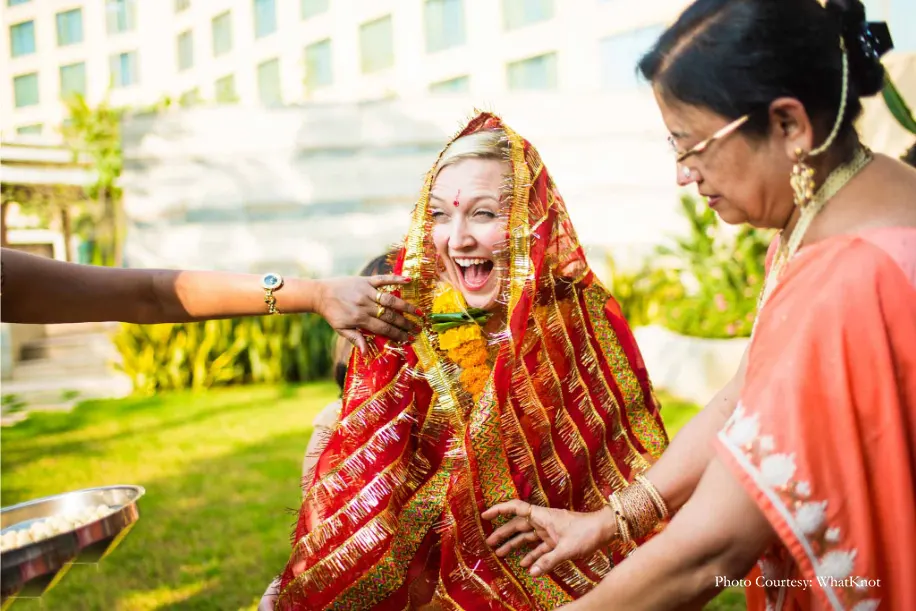
Pakki Misri
Generally held a week before the wedding, the Pakki Misri ceremony is the formal engagement of the couple. An abundance of lavish gifts from the bride’s side is sent to the groom’s house including fruit baskets, gift hampers, gold, clothing, sweet platters and token money to solidify the match. The groom’s family sends the bride some gifts as well, such as clothing or jewellery. The bride’s family sends a customary ‘dupatta ki saree’ that the priest places on the groom’s head for the ritual, meant to be worn by the bride after the wedding.

Berana Satsang
A prayer meet is held whereby the entire family prays to the almighty ‘Jhulelal’ to bless the couple in their upcoming wedding and marriage. The music is a mix of Jhulelal songs and popular Sindhi ladas, generally performed live by a professional group. Ladas are traditional songs that are sung through the wedding functions across numerous days.

Photo Courtesy: Baqdrop
Sagri
The Sagri or the Mehendi ceremony is generally held 2-3 days before the wedding by the bride’s side. The family gathers around the bride in a fun-filled ceremony where her hands and feet are covered in beautiful henna designs. The groom’s sister dresses the bride with beautiful floral jewelry, and she is showered with petals. The other ladies of the family also get their henna done.
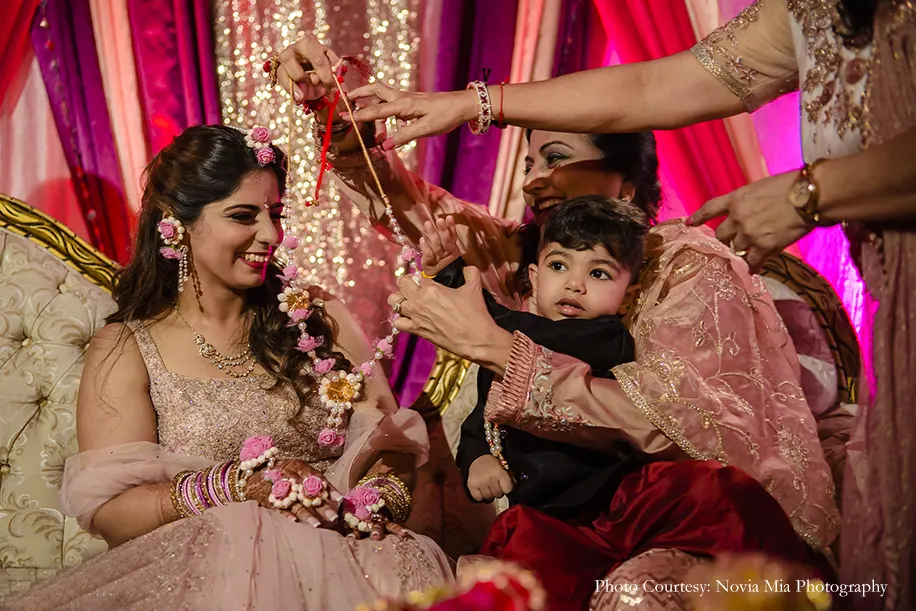
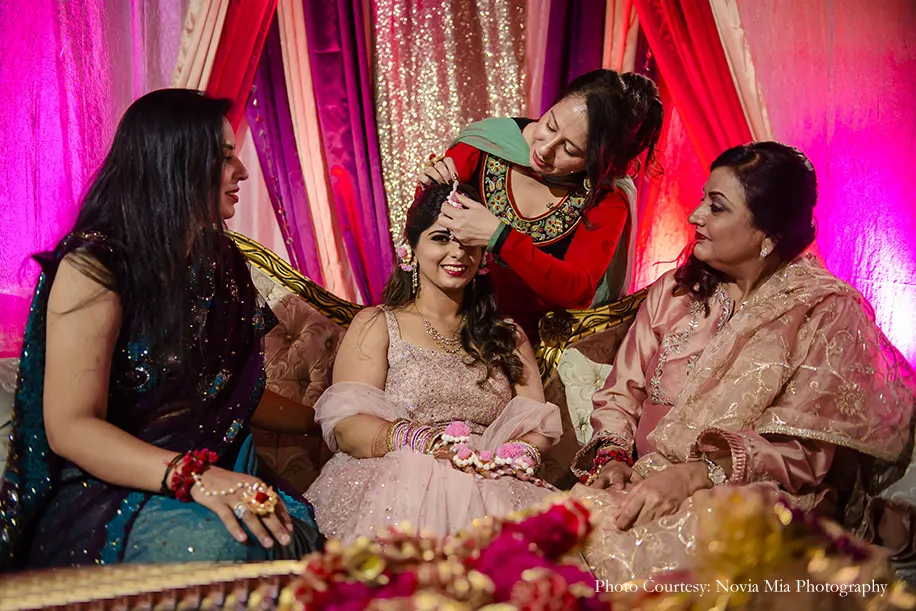
Sangeet
Again held 2-3 days before the wedding, the Engagement ceremony or Sangeet is an exciting night of dance and performances where both families take part and enjoy in the revelry. The couple exchanges rings in the presence of their loved ones.
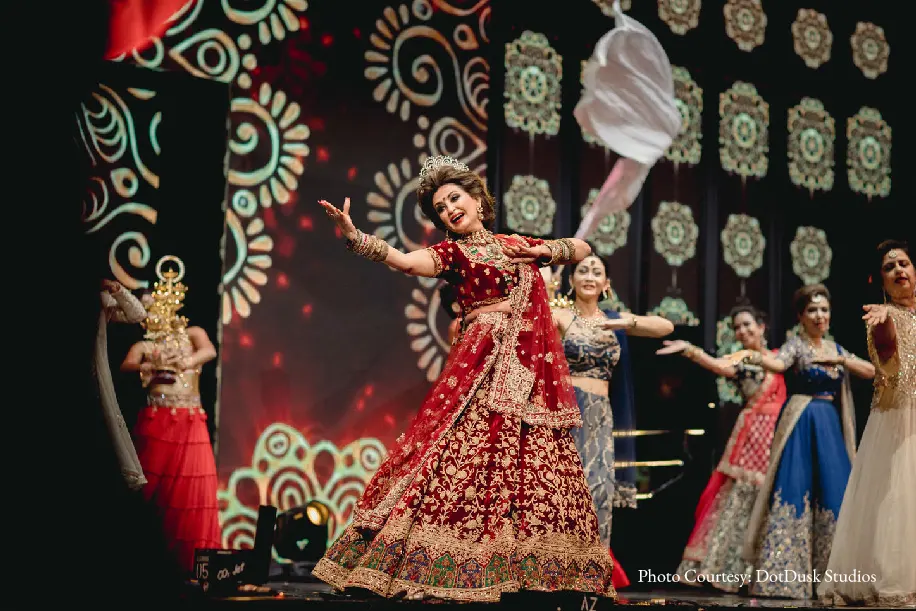
Dev Bithana or Ganesh Sthapna
A stone grinder is installed at both the bride and groom’s homes as an idol by the priest, and a pooja is conducted. This is generally done a night before the wedding.
Head Bukki and Saanth
These rituals are performed after the pooja. The head bukki is a ritual akin to the Haldi function for the bride, in which seven married ladies of the family apply oil to the bride’s hair and smear her with turmeric paste to give her a bridal glow.
For the groom, in a unique ritual called Saanth, he is doused with oil by the married ladies, after which his clothes are torn away by his family to symbolize him leaving behind his single life to get married.
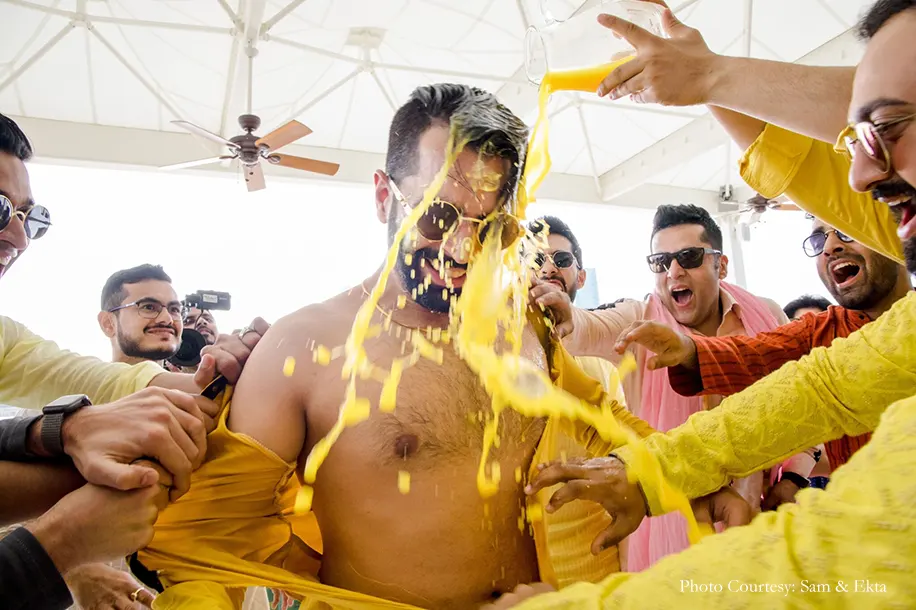
Navgrahi Pooja, Ghari Pooja
The Navgrahi Pooja is performed either the night before or in the morning of the wedding, wherein various Hindu gods along with the 9 planets are worshipped. They are invited into the house as guests by offering them food, water and light, which is done to appease all cosmic and mythical deities to remove any obstacles in way of the auspicious day.
Next, the Ghari Puja is performed at both the bride and the groom’s homes. The priest hands wheat grains to the couple, which is ground to flour by the married women of the house as a symbol of prosperity for the household. The bride and groom then smash an earthen lamp with their feet in their respective homes.
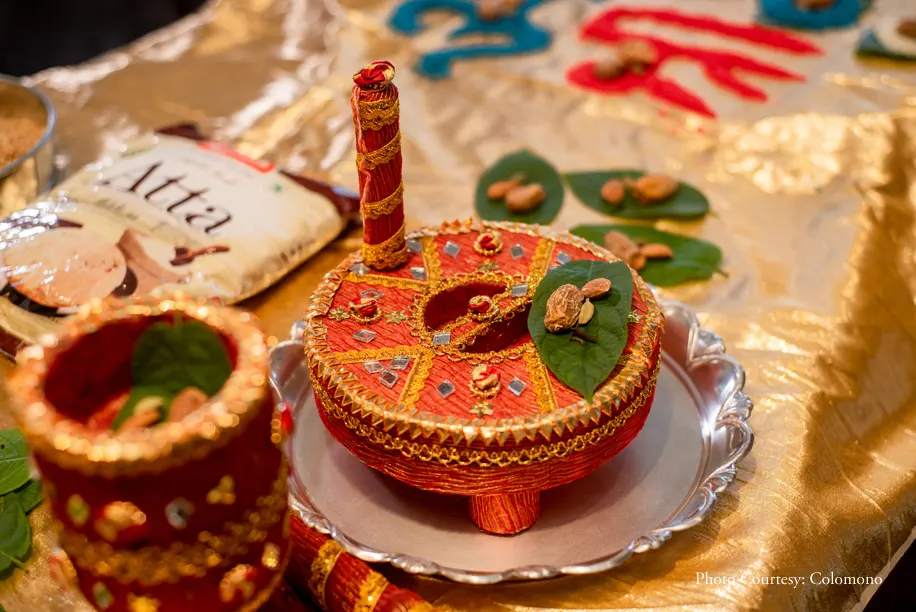
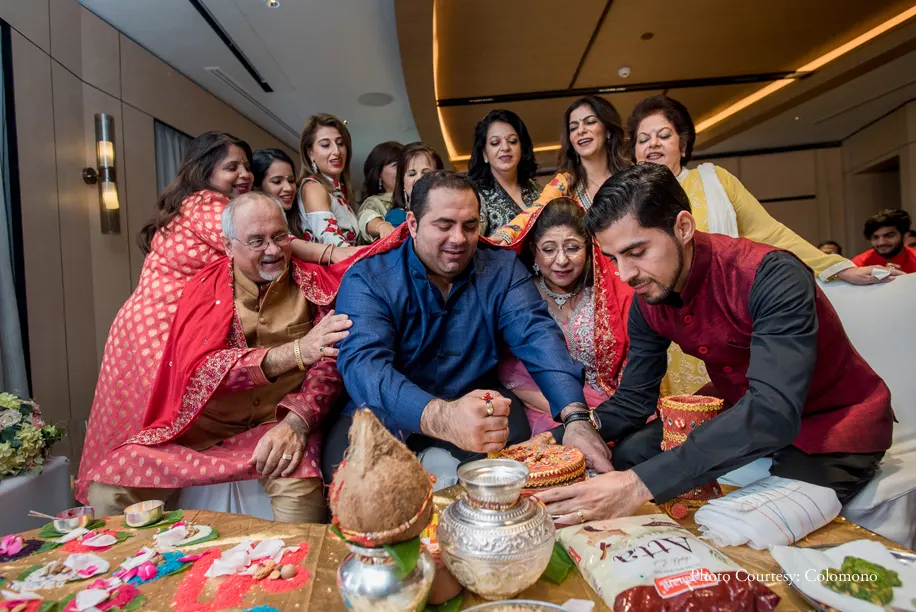
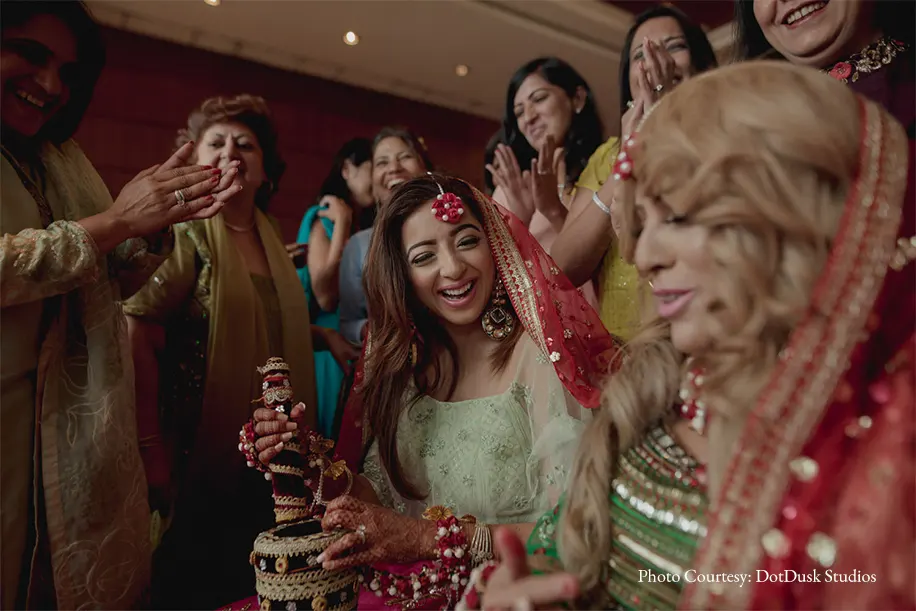
Garo Dhago
Again, this takes place in the morning of the wedding. The priest evokes the ancestral blessings of both families for the happiness and success of the new marriage. A sacred red thread is tied to the wrist of both the bride and the groom.
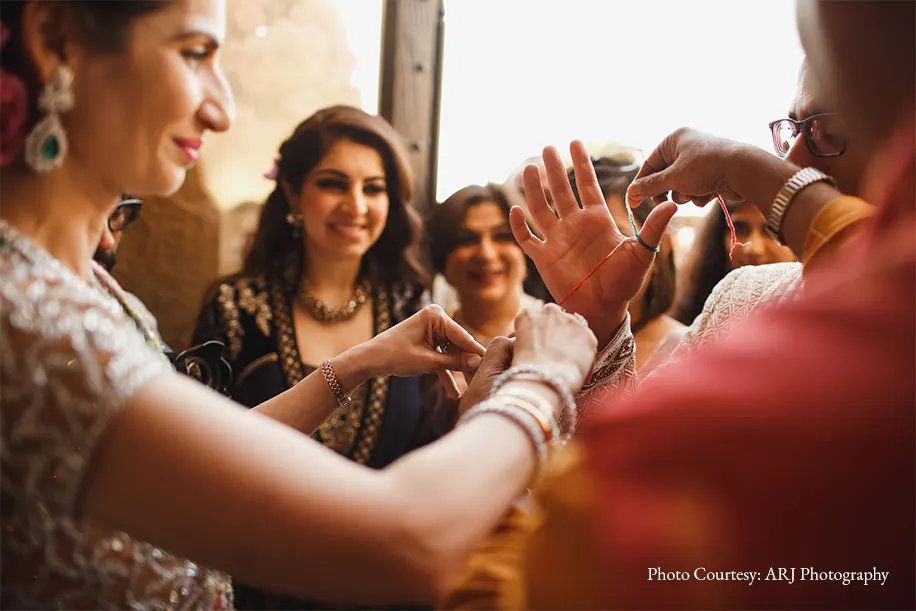
Barat
The groom leaves for the wedding venue with his energetic entourage of friends and family. Dressed in finery, they sing and dance with great enthusiasm the entire way.
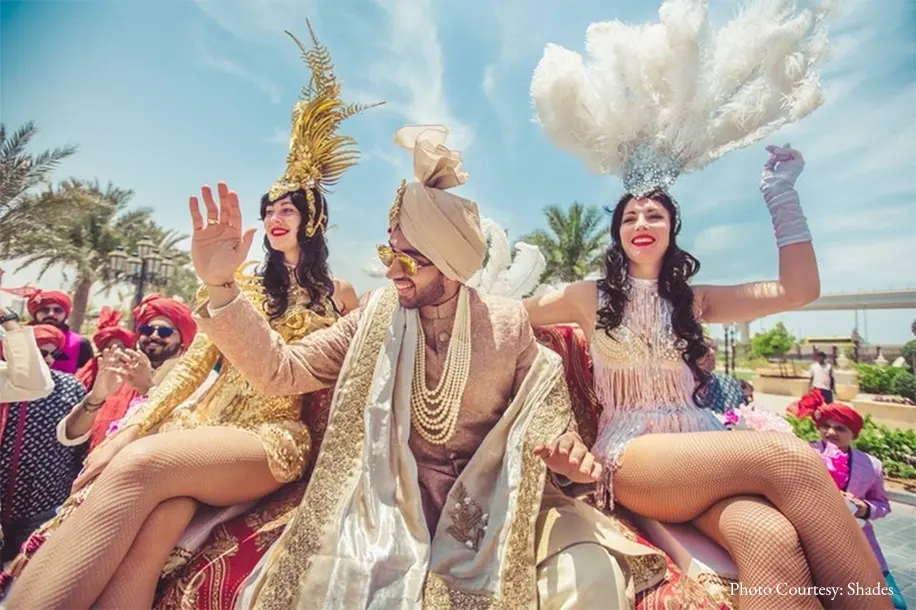
Swagat
The baraat is welcomed with a traditional aarti and tilak performed by the bride’s mother. His family is sprinkled with rose water and offered sugar and cardamom. A big dupatta or sheet is used to separate the groom and bride to block their view of each other. A customary pooja is performed, after which the sheet is lowered and the couple finally gets a glimpse of each other.
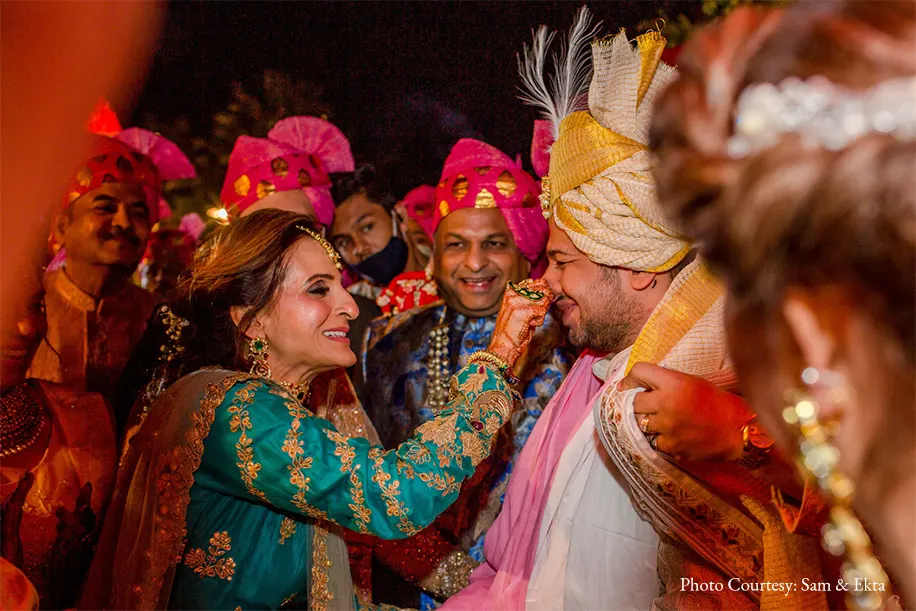
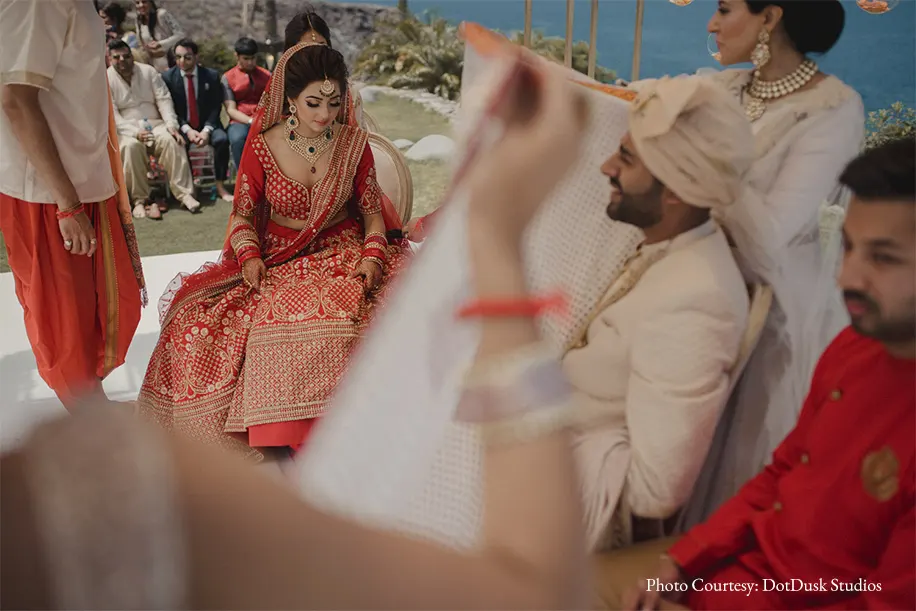
Pao Dhulai
The bride and groom are seated at the mandap. A beautiful blanket or duvet set that is given by the bride’s family as part of the trousseau is used to cover the seating, and later used by the couple after the wedding. Once they are seated, the bride’s parents wash the groom’s feet with milk and water. The groom is considered to be an embodiment of Lord Vishnu.
Jaimala
The bride and groom exchange beautiful garlands of flowers called Jaimala three times.
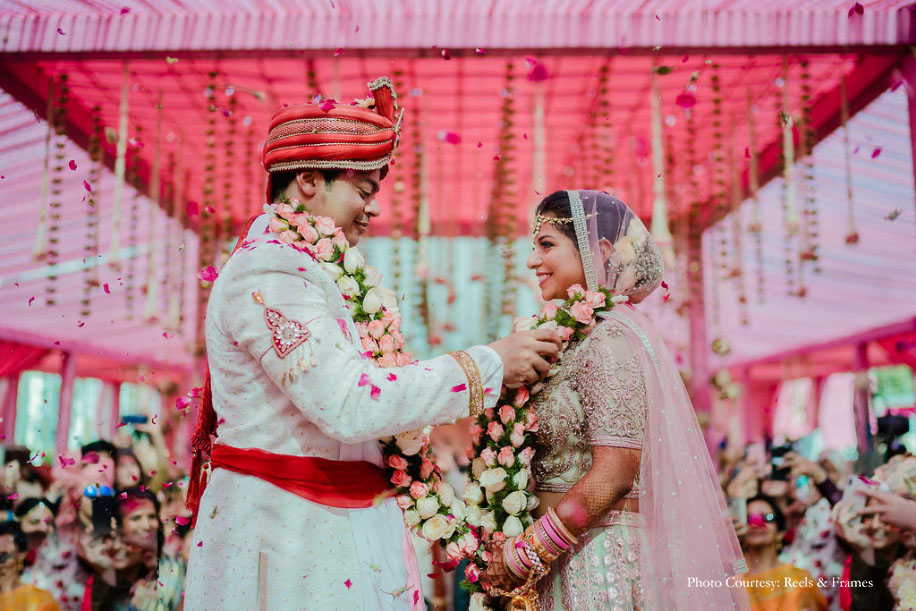
Palli Pallo
The bride’s dupatta is tied with the groom’s dupatta by his sister. She makes two knots connecting the dupattas while tying a few grains of rice within the knots.
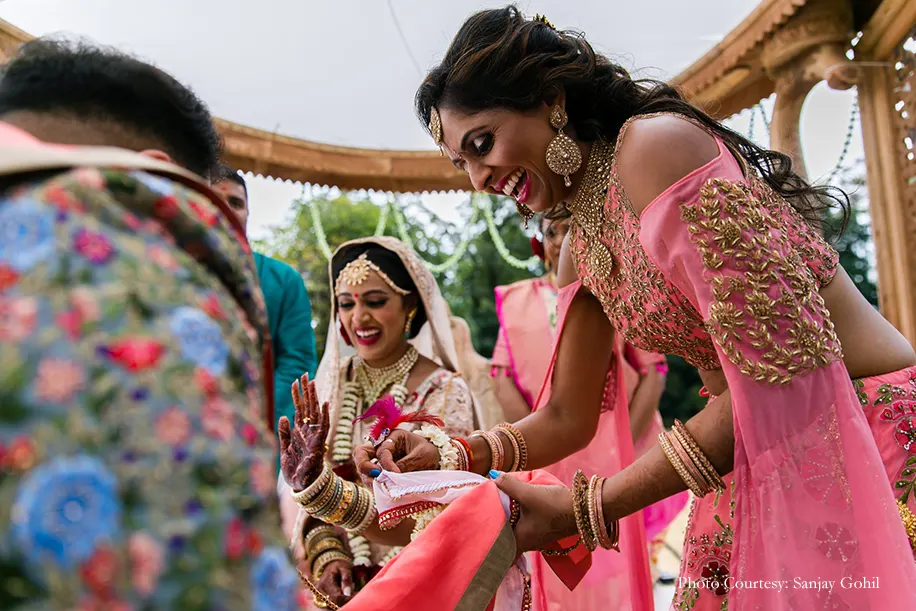
Hathiyaala
The bride and groom’s right hands are tied softly together with a red fabric signifying their union, as they offer prayers to God together. The couple walk around the holy fire four times as the priest recites Vedic chants. The groom leads for the first three, while the bride leads for the fourth. The four circles signify the four pillars of human life that is dharma, artha, kama, moksha. With this ritual, the couple is bound together in love and matrimony for the rest of their lives.
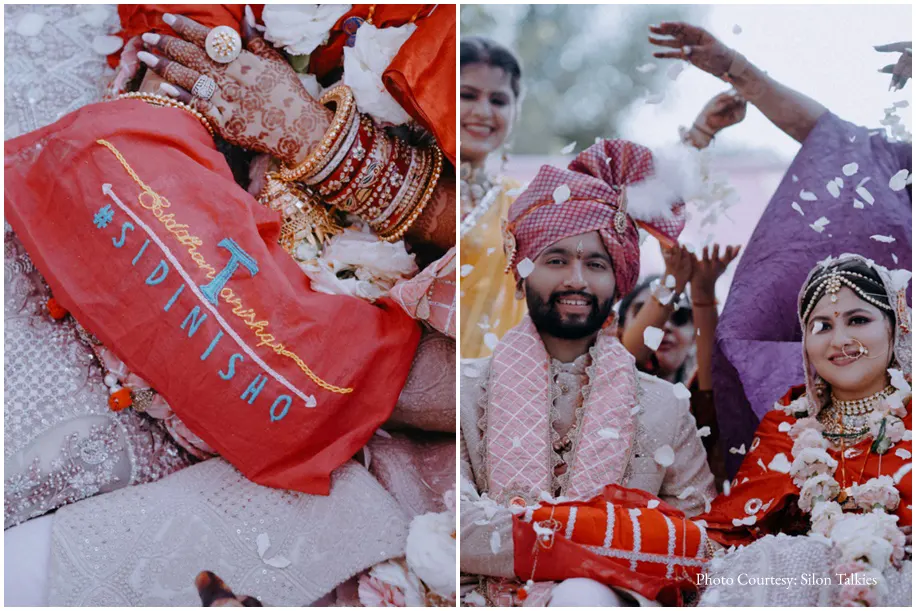
Kanyadaan
A ritual common to all Indian weddings and most others around the world, the Kanyadaan is the ‘giving away ceremony’, wherein the father of the bride officially gives his daughter to the groom, asking him to love, respect and care for her for the rest of their lives. He gently places a red saree over the bride’s head as chants are recited, and then he gives her a ring.
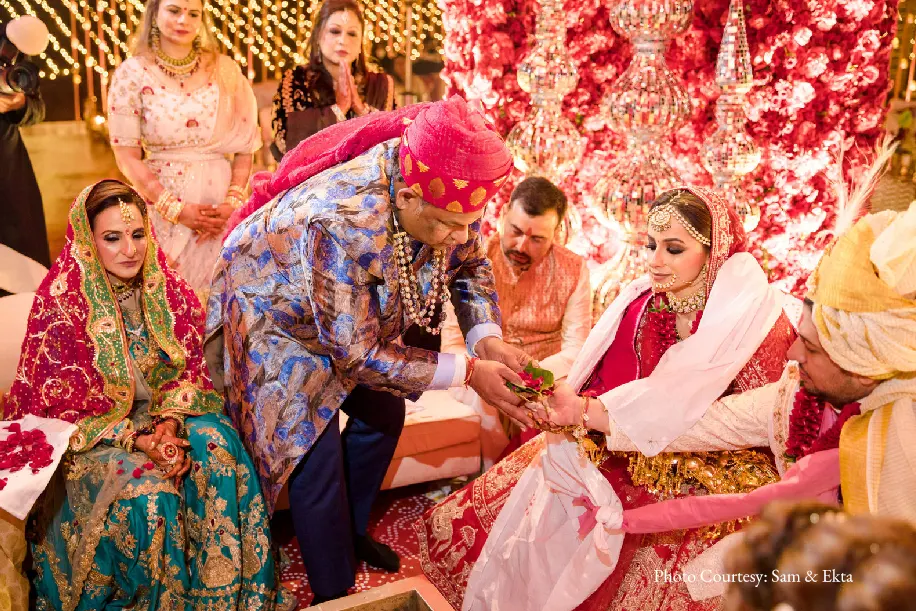
Saptapadi
The bride is asked to take seven steps, stepping over seven small piles of rice that symbolize the hardships that the couple might face in life. The groom holds her and helps her signifying them staying together through thick and thin while overcoming every hurdle.
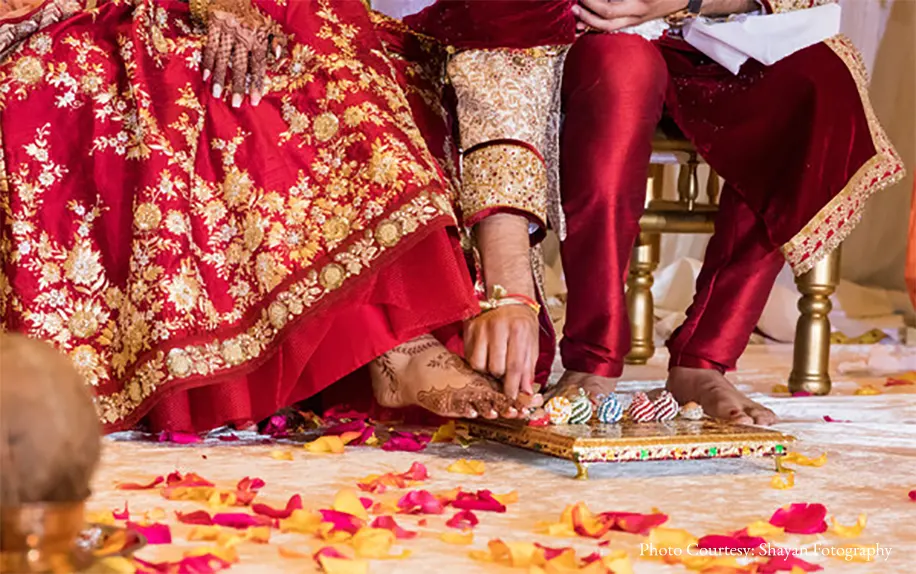
Bidaai
The bride bids adieu to her family and parental home with a tearful goodbye. She is given parting gifts by her father before leaving with her husband for her new home.
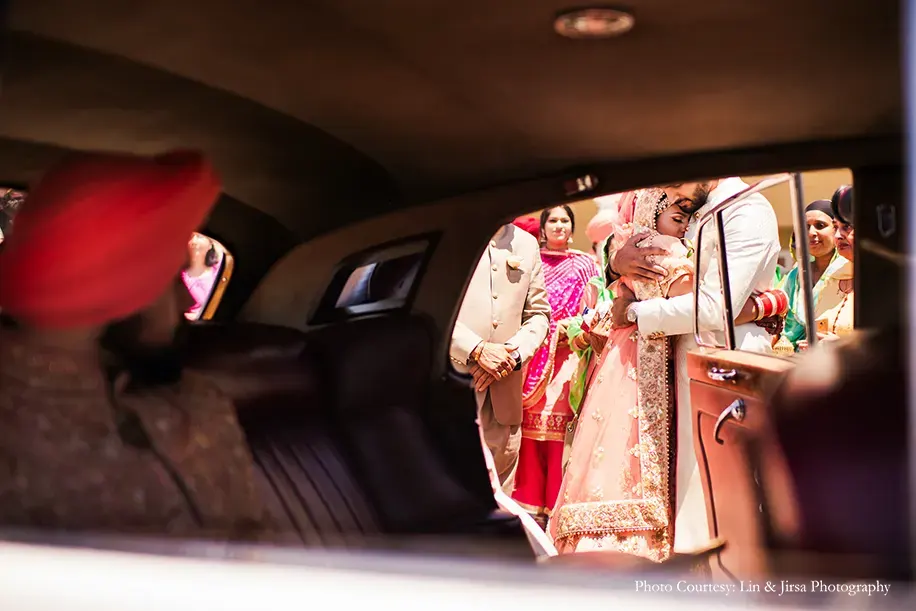
Datar
The bride is received with a heartfelt welcome by her in-laws in her new home. Her feet are washed as she enters, and then she sprinkles milk in all directions of the home.
Salt shagun
For this ritual, the bride passes a handful of salt to her husband, who passes it back to her without spilling it. This to and fro is performed three times.
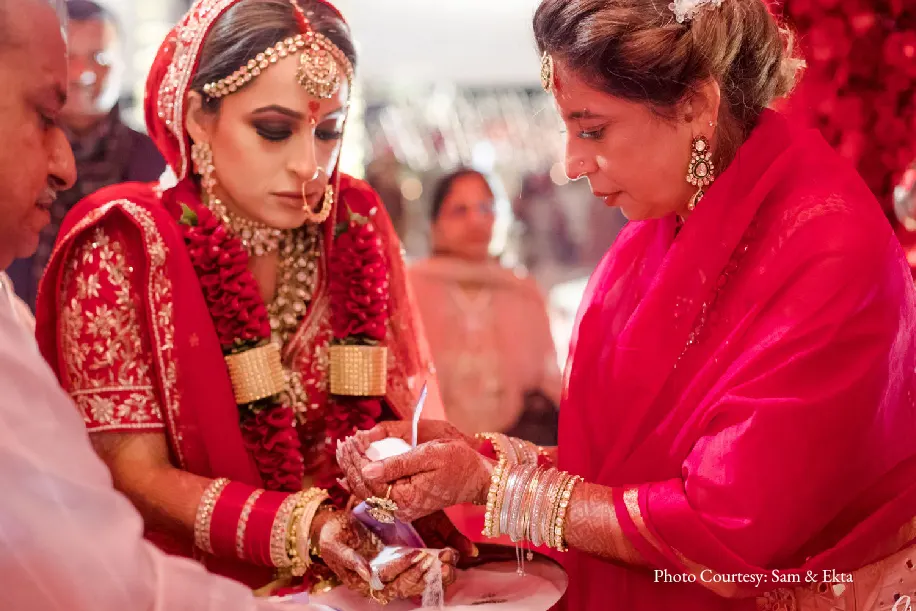
Chhanar
The next day, the priest performs a pooja and removes the stone grinder idol that he had installed before the wedding, after which the groom’s mother feeds the couple seven mouthfuls of milk, rice and sugar.
Satawarah
The couple visits the bride’s home at an auspicious time determined by the priest. They are received with a lavish welcome where they are treated to a feast and showered with gifts.
Gadjani
The bride is informally introduced to the groom’s relatives. This is either followed or directly replaced by a formal reception with a sumptuous Sindhi feast.
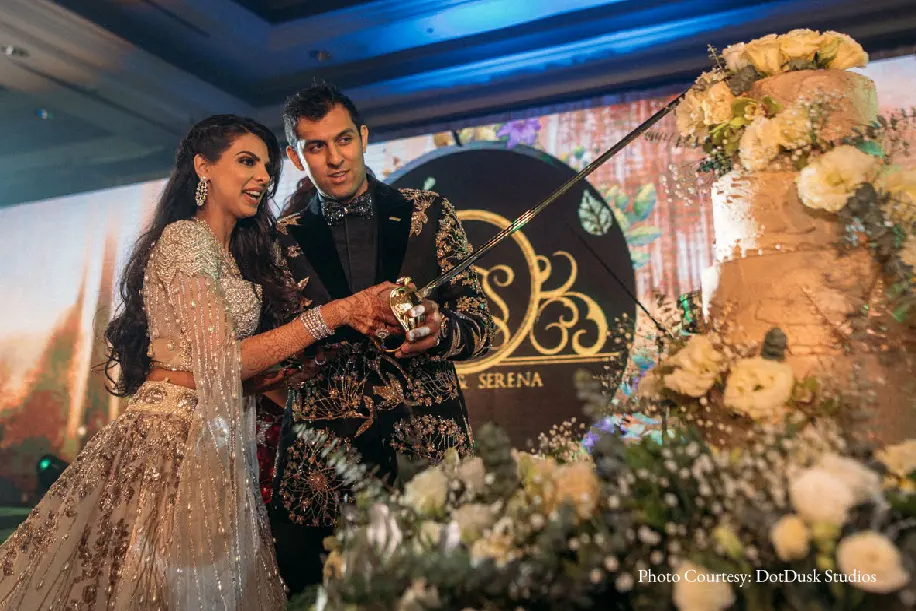
Things you are sure to see in a Sindhi Wedding
While most Indian weddings share common cultural and ritual nuances, there are some quintessentially Sindhi moments that you absolutely cannot miss at a wedding.
Saanth
The ritual of Saanth is undoubtedly the most unique ritual in Sindhi tradition. The custom sees the groom’s clothes being torn off by his family to symbolize a break with his past to step into his new life matrimony. The function is as heartfelt as it is fun, and definitely something one will always remember.
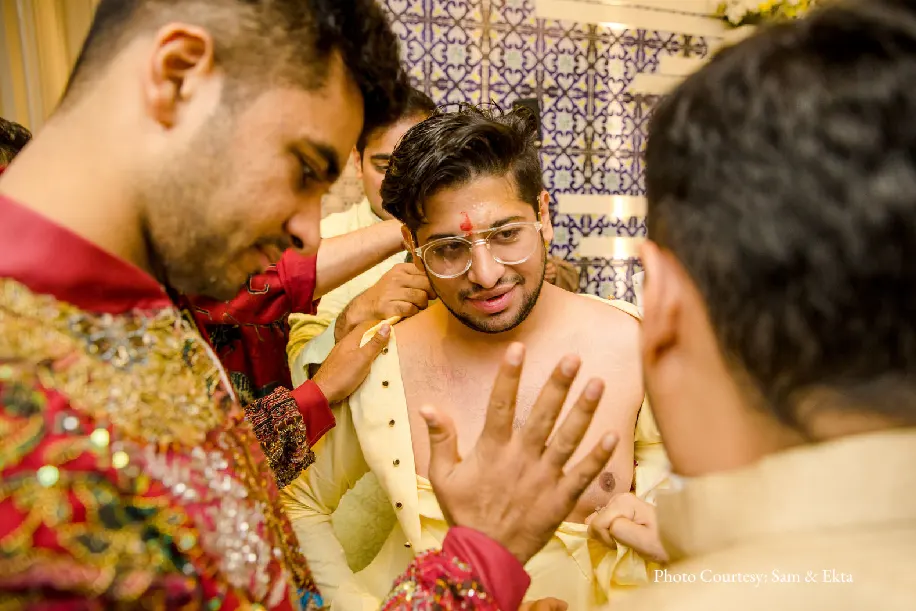
Loud, late baraat
With the never-ending stamina and love for dancing that the Sindhis are known for, it’s no surprise that most baraats never reach at the scheduled time. The momentous energy and joy they bring with them however, is worth the wait!
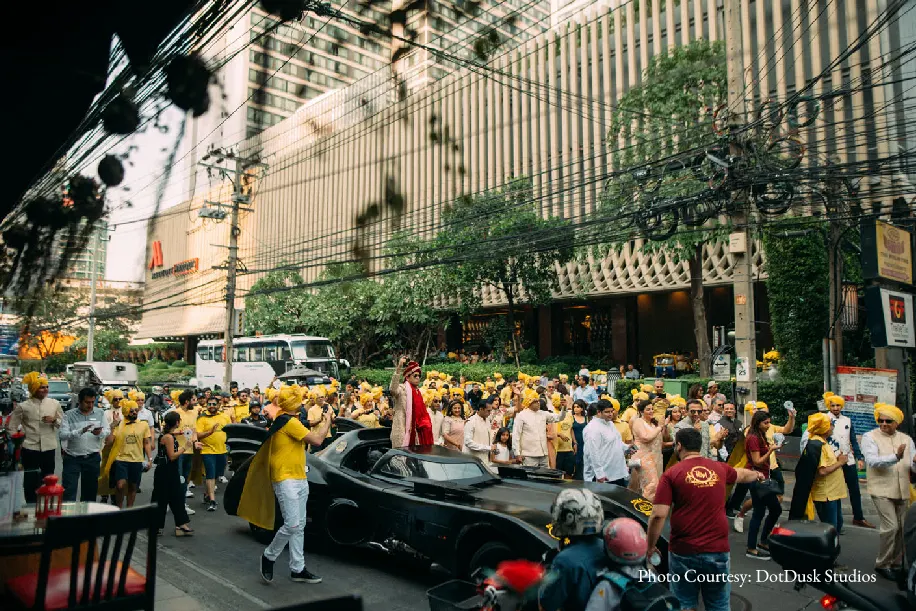
Non-stop dancing
No Sindhi wedding is complete without rousing music and incessant dancing as everyone lets their hair down! Be it the Mehendi, Sangeet or the wedding, every function begins and ends with infectious energy.
Lip-smacking food
The Sindhis have always been famed for their love of food, and any and every celebration is a culinary extravaganza with an enviable spread of food.
Bling, bling and more bling
OTT and colorful as a culture, weddings are the perfect occasion to unleash the fashionista inside every Sindhi. And they absolutely love BLING!
Fashion tips to immerse in the culture
Burst of colors
Feel free to embrace the full spectrum of colors when it comes to building your wardrobe for a Sindhi wedding. It is undeniably going to be the most vibrant celebration of your life.
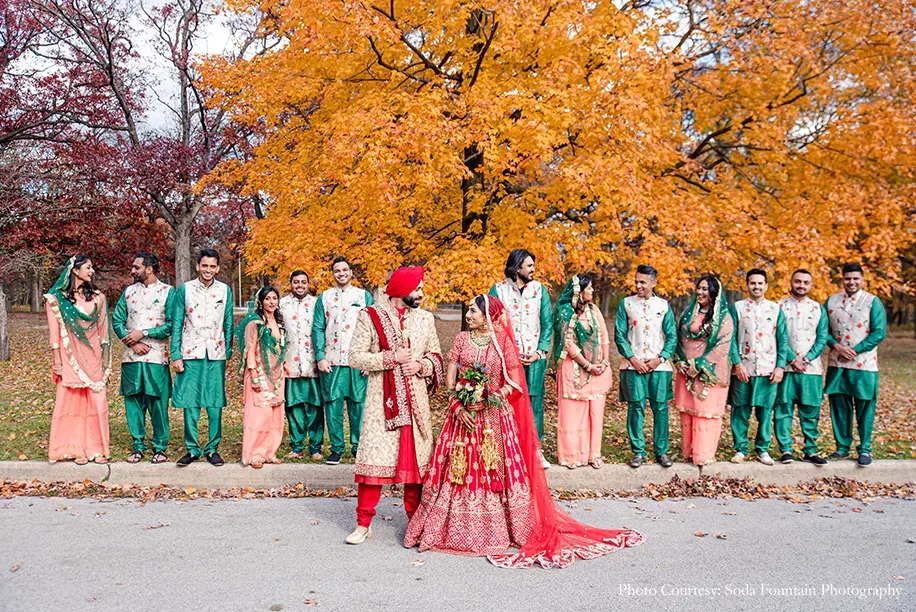
Blingy Outfits
If you are a guest and you love sparkle, a Sindhi wedding is definitely the occasion to go all out on bling without the risk of overtaking the bride’s splendor, because rest assured, all her friends and relatives would be just as decked out! If you are a bridesmaid however, do check with the bride before splurging on your outfit, in order to stay complementary.
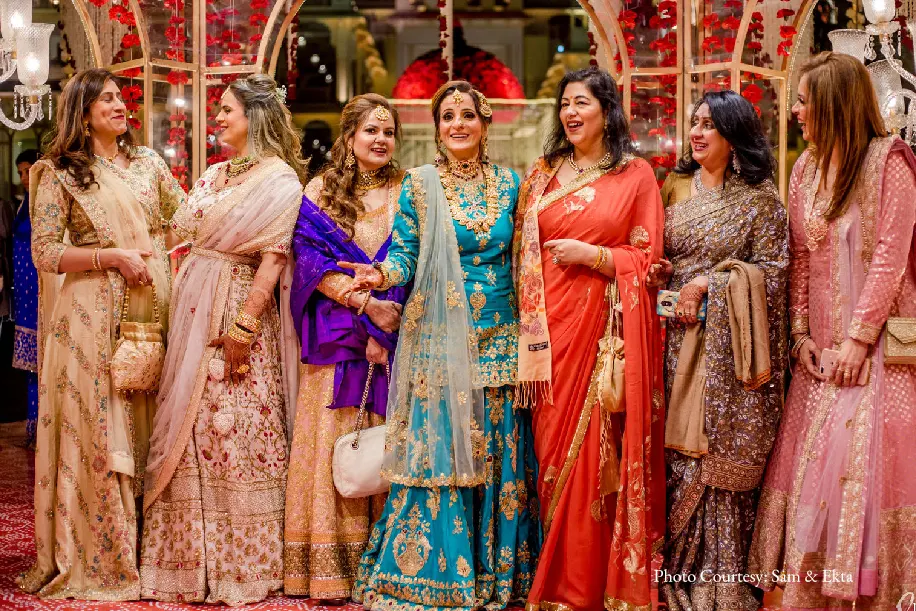
To start planning your wedding, click here.
